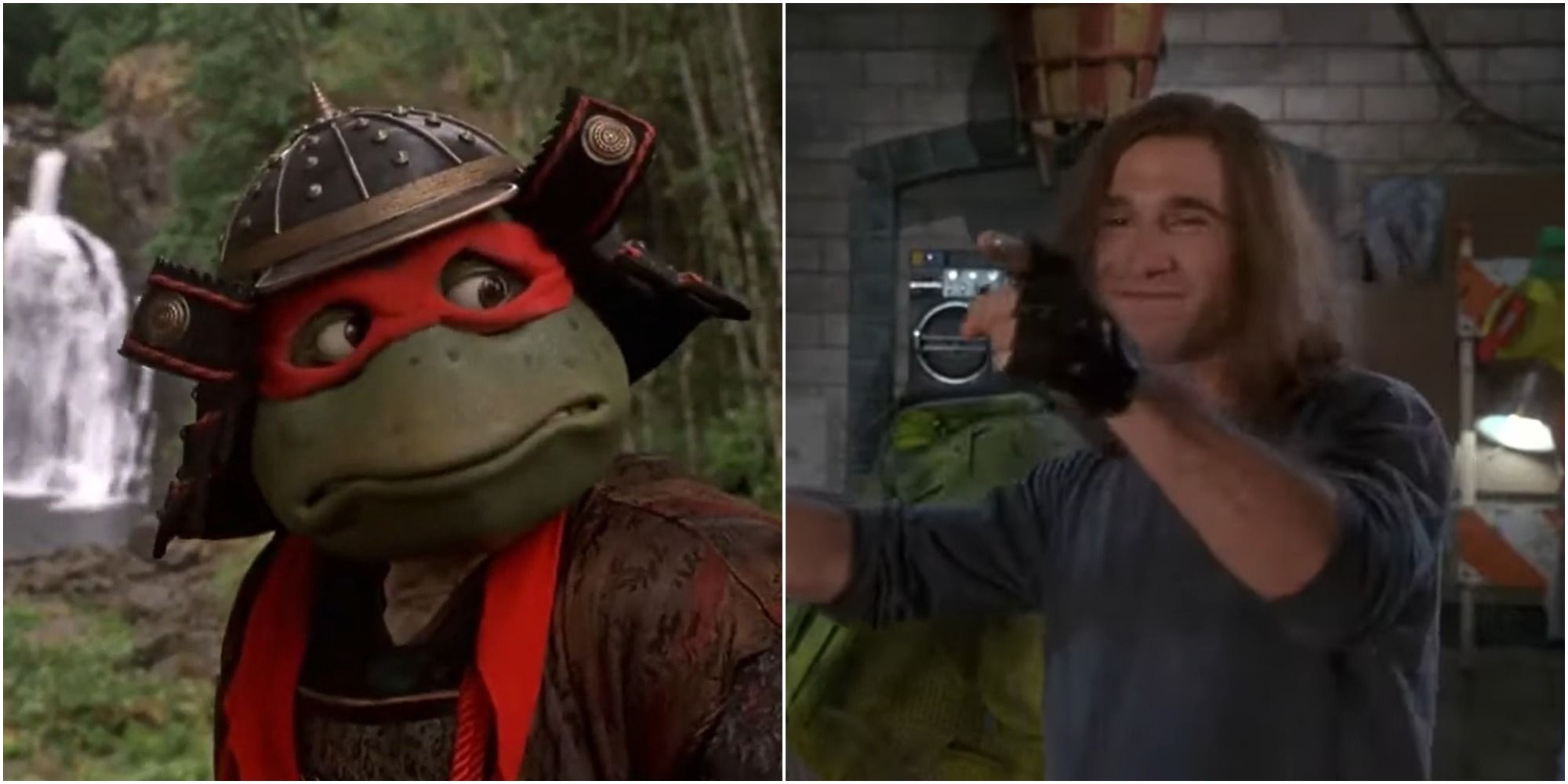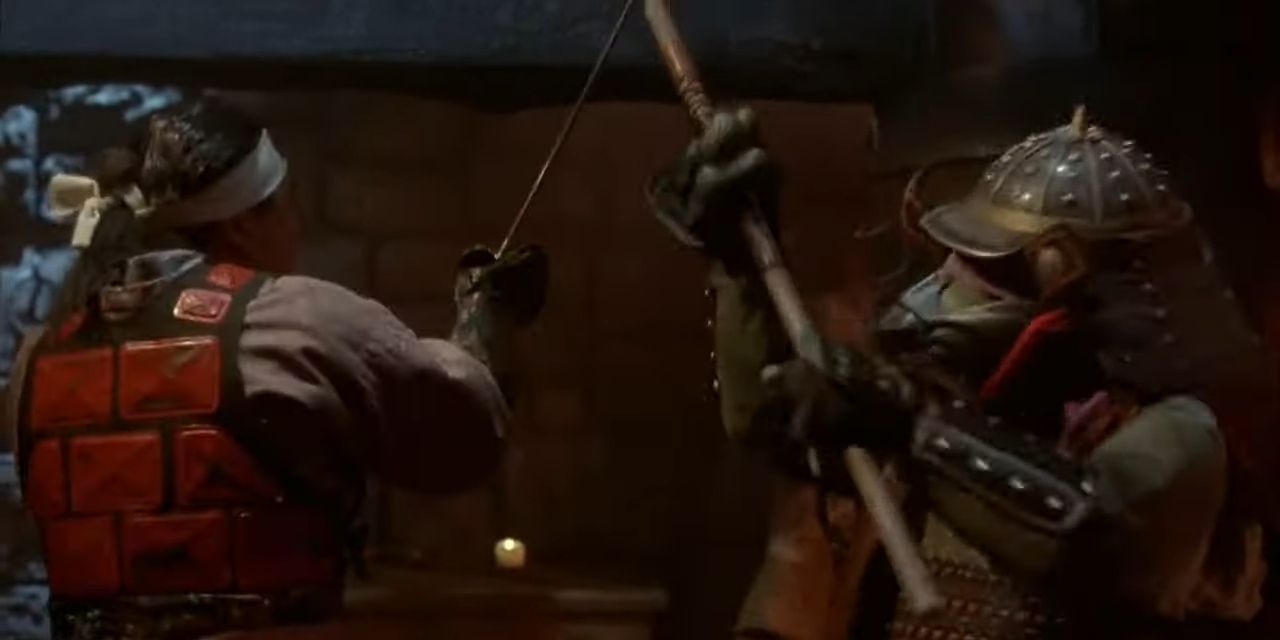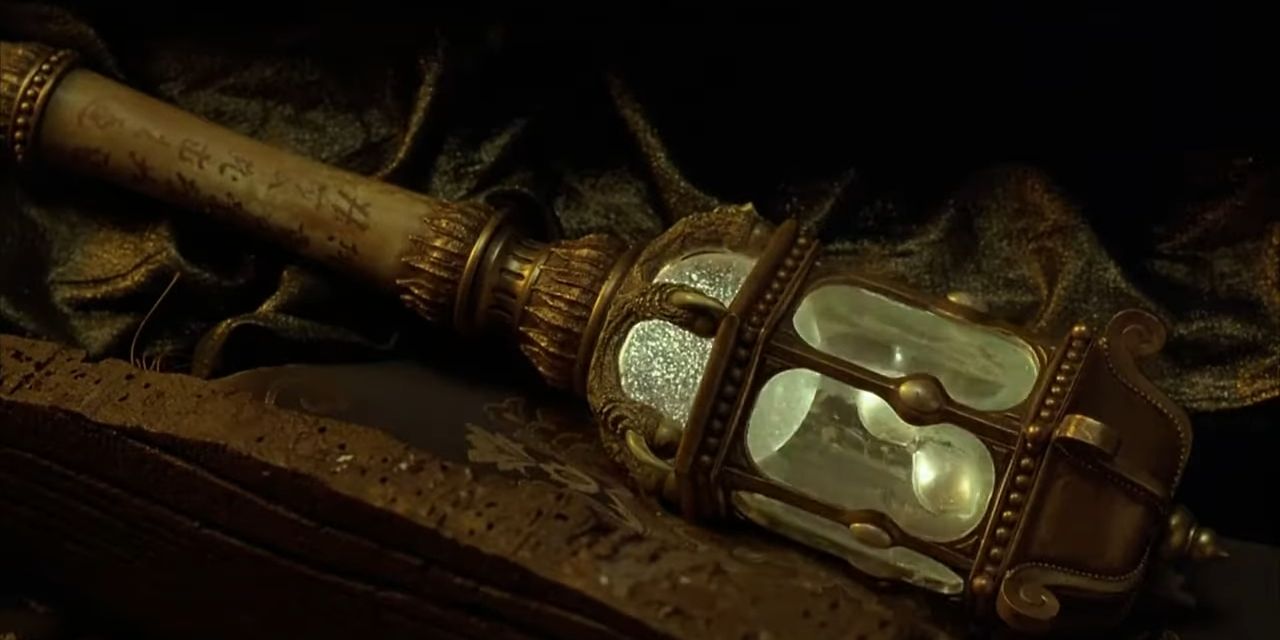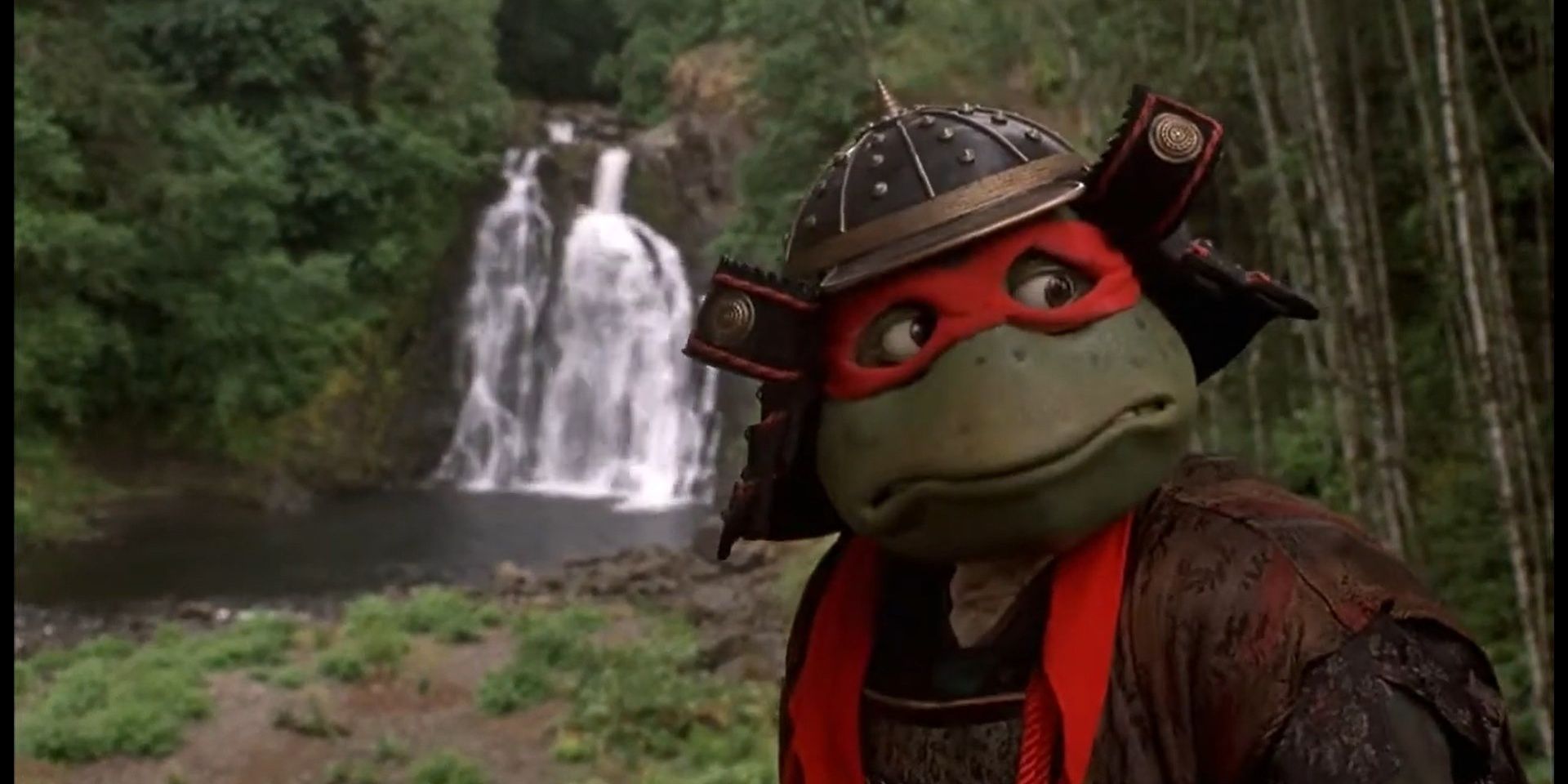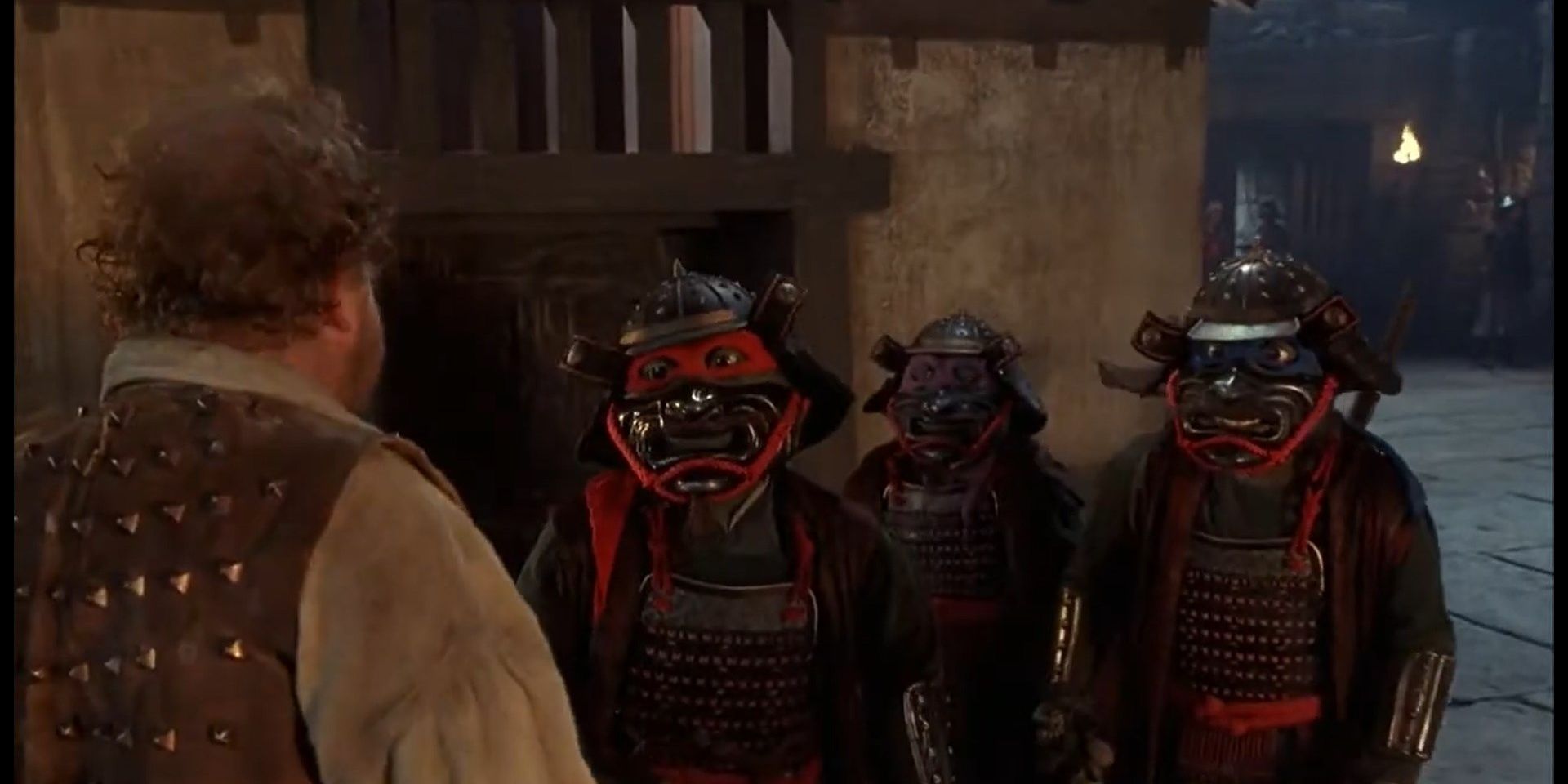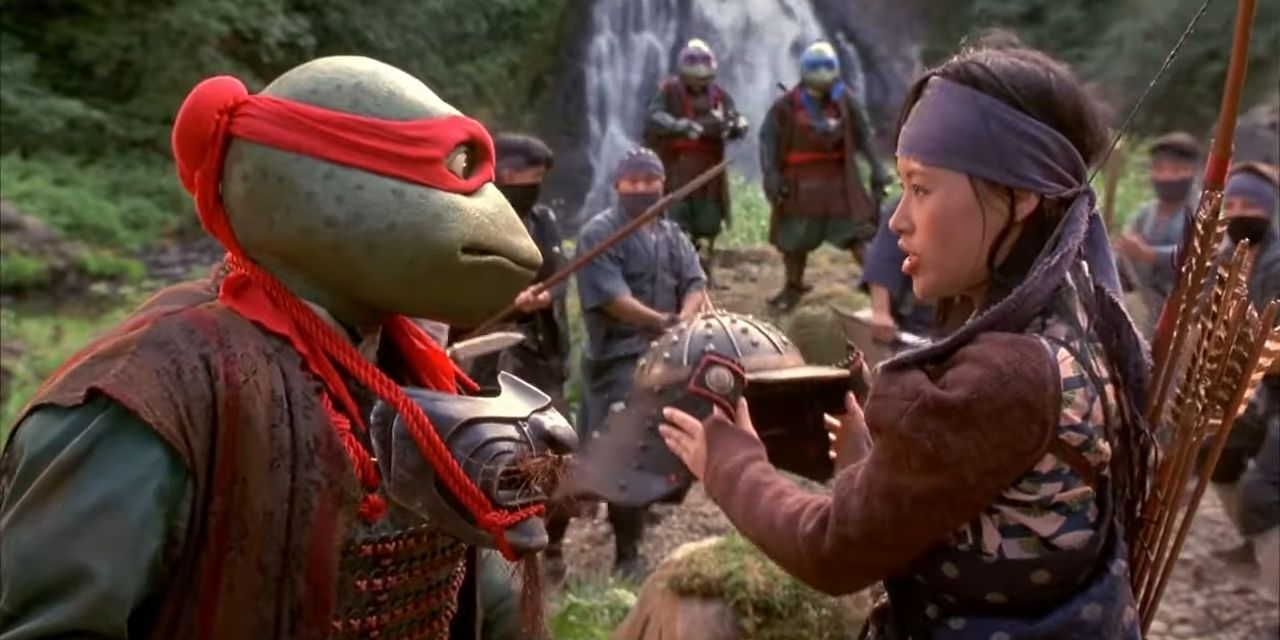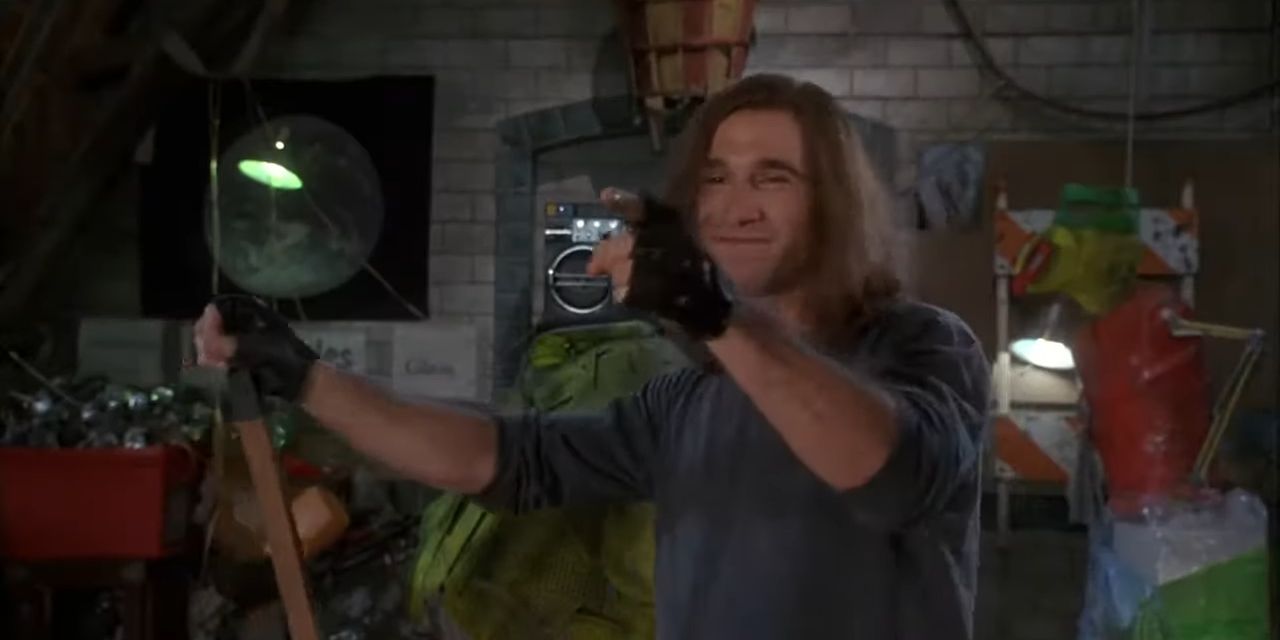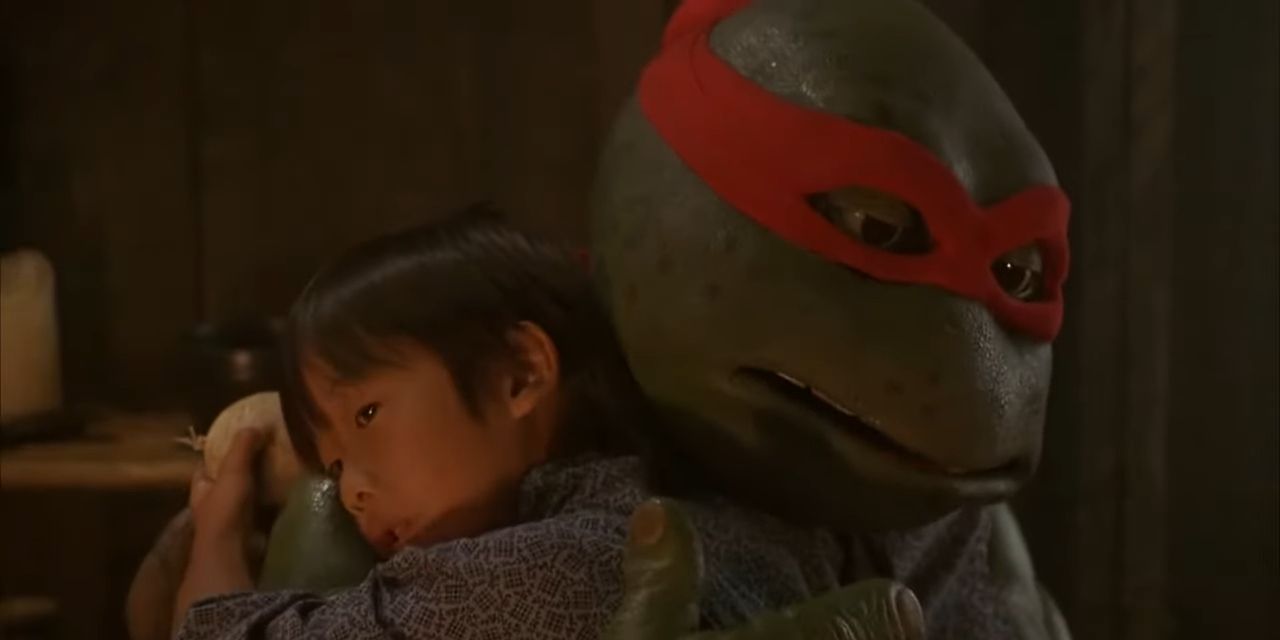One of the low points of the Teenage Mutant Ninja Turtles franchise is the release of Teenage Mutant Ninja Turtles 3 in 1993. This movie has a lot of issues, from the excessive jokes that fall flat to the non-Jim Henson costumes that look more Five Nights at Freddy’s than Teenage Mutant Ninja Turtles.
However, even a bad movie can have some redeeming value. Teenage Mutant Ninja Turtles 3 does have some interesting ideas for those who give it a chance, and it’s enough to give the movie an identity entirely its own, so here are seven redeeming things about Teenage Mutant Ninja Turtles 3.
7 Butt-Kicking Ninja Action
If this is a Teenage Mutant Ninja Turtles movie, then it better have some ninja action. Thankfully, Teenage Mutant Ninja Turtles 3 does not disappoint on that front.
The fights make excellent use of the Ninja Turtles’ weapons, and the final battle in Lord Norinaga's fortress is pure chaos. It is even more impressive that the fight choreography is done in those cumbersome suits, which made the character actors sweat buckets during production of the first Ninja Turtles movie.
6 Time Travel Is A Nod To Early TMNT Lore
A complaint often leveled against Teenage Mutant Ninja Turtles 3 is the use of time travel as the plot’s central mechanic, when April brings to the Turtles’ lair a Japanese time scepter that transports her to Feudal Japan, requiring the Turtles to follow her and bring her home.
While time travel seems like jumping the shark, it is actually a nice nod to one of the early Turtles stories, where Renet, apprentice to Lord Simultaneous, steals his time scepter and ends up taking the turtles to the Middle Ages. The character would later return in the 2003 cartoon, and bring the Turtles all the way back to the Stone Age.
5 The Turtles Are In Feudal Japan
One great thing about the Teenage Mutant Ninja Turtles is how much influence they take from Japanese culture. Throughout the franchise history, many of their moves, weapons, and practices are ripped directly from the ways of real practitioners of Ninjutsu.
In Teenage Mutant Ninja Turtles 3, the Turtles get to see Japan for themselves. Raphael embraces it, relishing the fact that they are surrounded by clean water and fresh air, and not the stench of the New York City sewers. Being in the country that birthed Ninjutsu is basically like the Turtles’ story coming full circle.
4 The Turtles And Japan Are East Meets West
The Teenage Mutant Ninja Turtles have always been this odd amalgamation of East meets West. They are pizza-munching mutant New Yorkers trained in the Japanese Martial Arts.
In Teenage Mutant Ninja Turtles 3, the Turtles find themselves in a conflict between the Samurai Warlord Norinaga (Sab Shimono), the English tradesman Walker (Stuart Wilson), and a poor village. Multiple conflicts would rise throughout Japan’s history as many of the Japanese people would struggle to maintain their way of life in the face of this cultural clash. It makes sense to put the Turtles within this context, as they themselves are the product of two clashing cultures.
3 Teenage Mutant Ninja Kappa
One of the interesting things about Teenage Mutant Ninja Turtles 3 is that viewers get to see the Turtles from the cultural lens of Japan. Those who encountered them saw them as Kappa, which are freshwater-dwelling creatures that often appear as humanoid turtles.
Master Splinter says that some are good, and some are bad, which explains why the son of Norinaga, Kenshin (Eidan Hanzei), is so terrified of the Turtles when first encountering them. Kappa in Japanese culture are known to pull children down into the depths and devour their organs. They are also known to pull pranks on their victims, which a certain orange-masked terrapin is not above.
2 Casey Is Back
One of the Turtles’ essential allies in the first movie was Casey Jones (Elias Koteas), the lunkhead who likes to dispense justice with sports equipment, even if he has to know what a crumpet is to understand cricket.
Casey returns in Teenage Mutant Ninja Turtles 3, although in a less significant role. He has to keep watch of the Turtles’ lair while they are away, and manage the Imperial Guards who wound up misplaced by the Turtles’ time travel. However, Koteas does play double duty as Flint, an Englishman who ends up tagging along with the Turtles and April in Japan.
1 Raphael Is A Dad
Raphael has the most complex relationship with his Master Splinter. Raph struggles to control his anger, yet Splinter never loses his patience with him. It was likely Raphael who hurt the most when Splinter was taken in the first Ninja Turtles movie.
In Teenage Mutant Ninja Turtles 3, Splinter’s influence on Raphael shines through when he befriends a young boy named Yoshi in the village where the Turtles take up residence. When Raph sees Yoshi pretend fighting, he tells the boy that he needs to watch his temper, which is what Splinter always cautions Raph about. The relationship between Yoshi and Raphael makes some tender moments. Also, the fact that the child shares his naTme with Splinter’s former master, Hamato Yoshi, hints that maybe the wisdom Splinter learned from his master was originally passed down by Raphael himself, making for some timey-wimey stuff.
Teenage Mutant Ninja Turtles 3 is available for viewing on Amazon Prime, Google Play, HBO Max, iTunes, Vudu, and YouTube.

